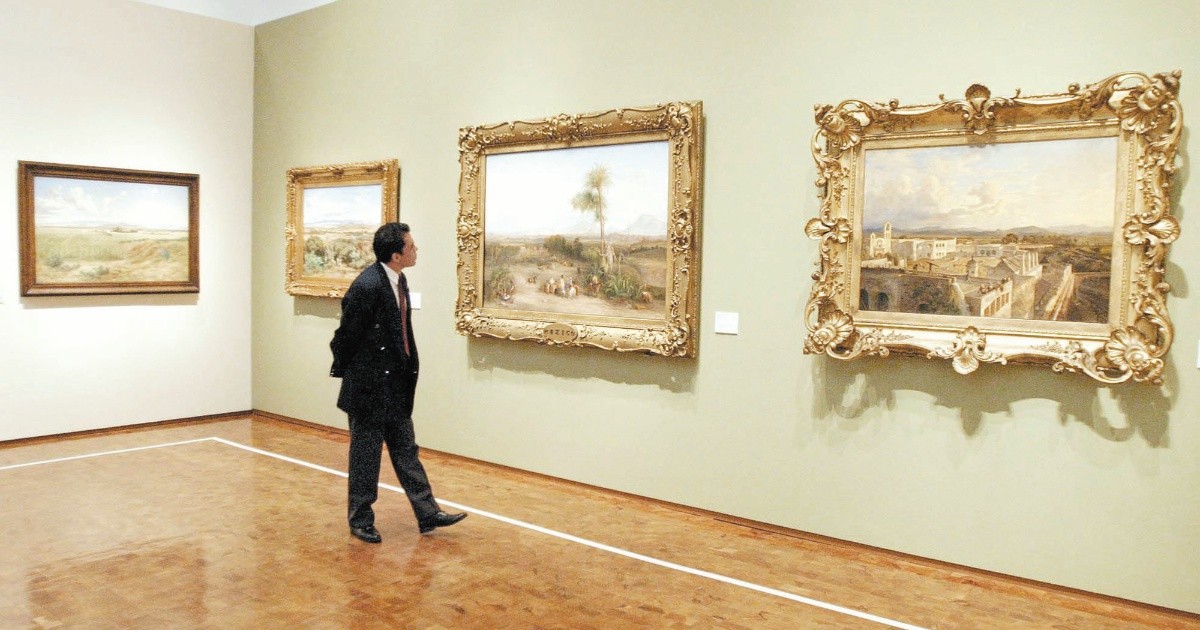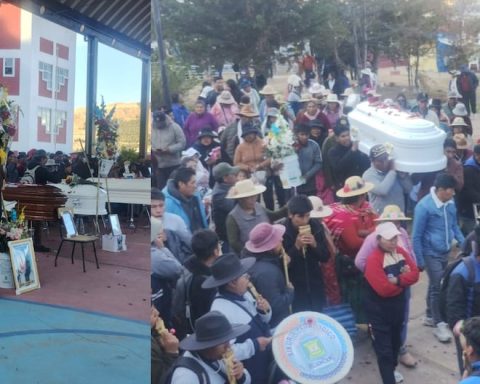The news of Citigroup’s exit from retail banking in Mexico and, consequently, the sale of Citibanamex, announced last Tuesday, raised questions about the status and destination of the artistic heritage in charge of Fomento Cultural Citibanamex (FCC), considered as the most important private institutional collection of Mexican art, but it also raised doubts about the authority of five stately buildings from the 16th and 18th centuries and one of the most historically valuable documentary archives.
This Thursday, Alberto Gómez Alcalá, Citibanamex corporate director of Economic Studies, Institutional Affairs and Communication, reiterated that both Fomento Cultural Citibanamex and the various collections and emblematic buildings “will be an integral and indivisible part of what is for sale.”
However, he guaranteed that the various collections of pictorial art, popular art and documentary in the possession of the group, as well as the historical archive “will remain in Mexico with all the protection they have had.” Likewise, he specified that the cultural support programs, the exhibitions already anticipated, the workshops and the publications, among them the Masters of Popular Art program, “will continue to be in force and operate according to the plans that we have announced,” at least until the sale is finalized. , although he acknowledged that what happens after the transaction is not in his hands.
“Today the collection is in Mexico. Going forward, with the new owner, we no longer know what might happen, but what we believe is that this (the value of the integrity of the collection) will be a very important consideration for the new owners and will be very high in their priority ”.
To the question about the monetary value of the total or separately of the cultural heritage for sale, Gómez Alcalá replied: “We like to say that our cultural heritage is invaluable and it is the answer that I can give you, no matter the number in pesos (… ) we do not have an appraisal as such of the collection. Of course we have it insured and there are documents that protect it, which is not public information ”.
He only specified that all the buildings and practically the entire art collection that Citibanamex protects are property of the bank, except for very few examples that are on loan, without specifying which ones.
The architectural jewels that the institution boasts are the emblematic Iturbide Palace (inaugurated as the Banamex Palace of Culture in 2004) and the old Palace of the Counts of San Mateo de Valparaíso, today known as the Valparaíso Forum, both essential buildings in the Historic Center of the Mexico City, as well as Casa Montejo, built in Mérida, Yucatán, in the 16th century, the only example of a civil house in the Renaissance style in Mexico; These three buildings are declared by the INAH as a Historical Monument. In addition, there is the Palace of the Count of Valle de Súchil, in Durango, and the Casa del Mayorazgo de la Canal, in San Miguel de Allende, Guanajuato, both from the late 18th century.
In the collection that, according to the manager, amounts to more than 600 pieces (unofficially they are calculated around 4,000) including oils, watercolors, sculptures, goldsmiths, furniture and textiles, works by fundamental artists of the country’s pictorial wealth stand out, such as Cristóbal de Villalpando, Miguel Cabrera, José María Velasco, Gerardo Murillo Dr. Atl, Diego Rivera, Frida Kahlo, María Izquierdo, Manuel Felguérez, Germán Gedovius, Eugenio Landesio, Remedios Varo, José Clemente Orozco, David Alfaro Siqueiros, Ángel Zárraga and Leonora Carrington, to mention a few that make up the gallery.
A peculiar heritage
When consulted on the subject, the researcher and doctor in Law César Benedicto Callejas, a specialist in intellectual property and legal argumentation, stated that Fomento Cultural Citibanamex has its own legal status, but “a peculiar patrimony” given that all the properties in its custody are subject to to a special regulation regarding its use, reforms and maintenance, and “it has to operate in accordance with the INAH criteria”.
Regarding heritage properties, he said, the property is conditioned to the fact that the properties cannot be modified without permission from the institutions, and they also have to be available for public access. “When the property is transferred, the conditions in which they were acquired are transmitted. They can be freely acquired by anyone who has sufficient capital to buy them, but whoever buys will acquire those obligations. “
Callejas highlighted that “in the aspect of colonial art they have a lot of work that is considered a national monument, so it cannot leave the country and notice must be given in case it is sold. The work has to be available for exhibition if required and, on the other hand, it has to receive maintenance so as not to deteriorate ”.
Such is the importance of this collection that, for example, he estimated that between 70 and 80% of the work of the largest landscape painter in the country, José María Velasco, is under the protection of Citibanamex. “The point is that the collection is valuable because it is together. What cannot be done or should not be done is to dismember it ”, he remarked, not only for Velasco but for the entire collection.
Finally, the specialist pointed out that “it would be a serious loss for the culture in Mexico if it were sold and the new owner decided to disappear it” and added that the best thing for this entity of great cultural relevance is “that a moral person be created to keep alive the cultural foundation and the collection, which could guarantee the exhibition, maintenance and fulfill the functions that Fomento has up to now. It would be wonderful even if it no longer depended on any bank ”.
Culture “will be aware”
In this sense, given that the “invaluable” cultural heritage of Citibanamex includes historical monuments subject to State regulation, this medium consulted the Ministry of Culture to find out the conditions under which the process of buying and selling these movable and real estate: “Until now they are decisions in the private sphere, of course public institutions have been and will be aware of the course to guarantee the protection of cultural heritage,” responded the general director of Social Communication, Isaac Macip Martínez.
In accordance with current legislation, a privately owned movable and immovable historical monument can be sold and the buyer would be obliged to comply with what is established in this matter by the Federal Law on Monuments and Archaeological, Artistic and Historical Zones (articles 6, 7 8th, 9th, 10,11,12, 13 and 16). (With information from J. Francisco de Anda Corral)
Given that a large part of the cultural property in the possession of the institution is subject to special regulation, its permanence in the country is guaranteed and whoever buys the collection will acquire the obligations established by law, although nothing prevents it from being dismembered. But the collection is valuable precisely because it is together, says César Benedicto Callejas, a lawyer specializing in intellectual property.
Historical data on Fomento Cultural Citibanamex:
- 56 exhibitions mounted at the Iturbide Palace
- 85 books and catalogs published to date
- 25 years of the Great Masters of Popular Art program
- 600 pieces or more make up the artistic collection including oil paintings, watercolors and sculptures
- 90 thousand documentary units in the historical archive
- 50 people work or collaborate for FCC
Cultural contribution of Citibanamex in 2020
- 47.7 million pesos for cultural programs, of which:
- 22 million went to donations
- 8.7 million for national exhibitions
- 2.3 million for the Art Support Program
- 1.4 million invested in publications
- 1.2 million for conservation and restoration
Source: 2020 Corporate Citizenship Report / Citibanamex
















